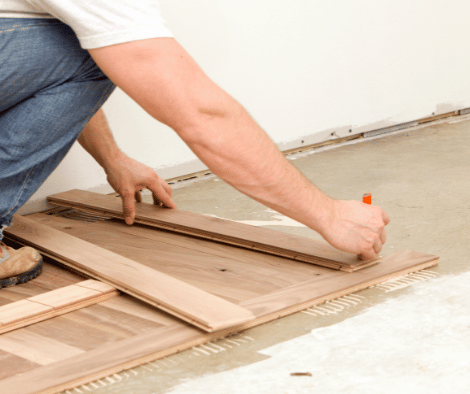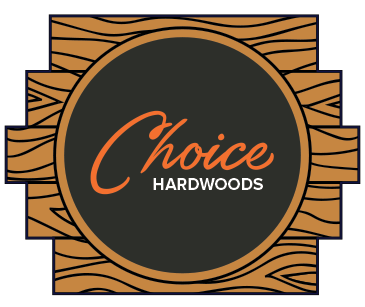Best hardwood floor types to install in a home

What Are the Best Types of Hardwood Flooring to Install in a Home?
When it comes to choosing the perfect hardwood flooring for your home, the options can feel overwhelming. As a homeowner, you want to strike a balance between aesthetics, durability, and cost, and that’s where we, at Choice Hardwoods, come in to help guide you. With over years of industry experience, we understand that hardwood flooring is a significant investment, and it’s essential to pick the best product suited to your lifestyle and space. The right flooring can transform your home, enhancing its value and aesthetic appeal while providing long-term durability.
In this article, we’ll cover some of the best types of hardwood flooring available, dive into different species and color options, and break down the key differences between solid 3/4-inch hardwood, engineered prefinished hardwood, and LVP (Luxury Vinyl Plank) flooring. By the end, you’ll have a clear understanding of what to consider and which type of flooring is best suited for your needs.
The Classic Appeal of Hardwood Floors
Hardwood flooring remains one of the most popular choices for homeowners due to its timeless appeal. It can add warmth, character, and elegance to virtually any room. Whether you prefer a traditional, rustic look or a sleek, modern style, there’s a hardwood floor to match your vision. When selecting the best hardwood for your home, it’s important to consider several factors, including the room’s function, the amount of foot traffic, the climate, and, of course, your budget.
But first, let’s explore some of the most popular types of hardwood species that homeowners typically choose.
1. Popular Hardwood Species
The species of wood you select will determine the look, feel, and performance of your floor. Different species offer unique colors, grain patterns, and hardness levels, which make them better suited for different environments.
Oak Hardwood Flooring
Red Oak and White Oak are among the most common hardwood species used in flooring.
- Red Oak is known for its warmth, with a reddish hue and a prominent grain pattern. It’s an excellent choice for homes with traditional or rustic décor. Red Oak is also relatively affordable and widely available.
- White Oak, on the other hand, has a more subtle grain pattern and is usually lighter in color. It’s often chosen for contemporary or modern designs due to its neutral palette and durability. White Oak is also highly resistant to wear and tear, making it perfect for high-traffic areas.
Maple Hardwood Flooring
Maple floors are lighter in color, ranging from cream to pale yellow, with a smooth and fine grain. Its natural lightness and durability make it an excellent choice for both modern and rustic homes. Maple is also known for its resilience and ability to resist scratches, which makes it a great option for busy homes.
Hickory Hardwood Flooring
Hickory is one of the hardest wood species, offering natural, rustic beauty. It has a pronounced grain pattern with striking color variations ranging from blonde to reddish-brown, which gives it an earthy, warm look. Hickory is perfect for homeowners looking for a more distinctive, high-contrast floor, and it stands up well to heavy foot traffic.
Walnut Hardwood Flooring
Walnut is a luxurious and rich hardwood option that boasts deep, chocolate-brown tones with a subtle, elegant grain. It’s perfect for homeowners who want to create a sophisticated and upscale look. While more expensive than other hardwoods, walnut floors bring unparalleled beauty to any space and age gracefully over time.
Cherry Hardwood Flooring
Cherry hardwood is known for its deep reddish-brown tones that darken over time, giving it a distinguished look. Its smooth texture and fine grain patterns are highly desired by homeowners looking to make a statement. Cherry is softer compared to other hardwoods, so it’s best suited for areas with lighter foot traffic, or where its beauty can be preserved.
Ash and Birch Flooring
Ash and Birch are less common but offer beautiful characteristics. Ash is light in color with a straight, uniform grain, while Birch has a fine, tight grain and a pale yellow-brown hue. These woods are both durable and less expensive compared to Oak or Maple, making them an appealing option for homeowners on a budget.
2. Choosing the Right Color for Your Hardwood Floors
When selecting hardwood, the color of the wood is a major consideration. Hardwood floors can range in color from very light, almost white, shades to dark, rich browns and blacks. Your choice of color will not only influence the room’s appearance but also its functionality. Lighter floors tend to make a room feel larger and more open, while darker floors can create a warm, intimate atmosphere.
- Light Woods (e.g., maple, ash) brighten a space and offer a fresh, clean look, which is ideal for smaller rooms or spaces with little natural light.
- Medium Woods (e.g., oak, hickory) are versatile and work well in a wide range of interiors, from traditional to contemporary.
- Dark Woods (e.g., walnut, cherry) are perfect for larger spaces, adding a touch of elegance and richness to a room, though they can show dust and dirt more readily than lighter floors.
3. Solid vs. Engineered Hardwood Floors
When choosing hardwood flooring, one of the most significant decisions is whether to go with solid hardwood or engineered hardwood. Both options offer their benefits, so understanding the differences is crucial for making the right choice for your home.
Solid Hardwood (3/4-inch) Flooring
Solid hardwood flooring is made from a single piece of wood and typically comes in a thickness of 3/4 inch. It is the most traditional option, offering durability and a timeless look that adds real value to your home. Solid hardwood can be sanded and refinished multiple times over the years, which allows for long-term maintenance and the ability to restore the floors if they become damaged.
- Pros:
- Can be refinished multiple times.
- Classic, high-end look and feel.
- Increases home value.
- Cons:
- Can be more expensive than engineered wood.
- Susceptible to moisture changes and may expand or contract with humidity fluctuations (not ideal for basements or bathrooms).
- More difficult to install, often requiring professional help.
Engineered Hardwood Flooring
Engineered hardwood consists of multiple layers of plywood with a hardwood veneer on top. This construction makes engineered floors more stable in environments with fluctuating moisture and temperature. The top layer of real hardwood gives the flooring the authentic look of solid wood, but the inner layers provide additional strength and resistance to warping or cracking.
-
Pros:
- Can be installed in areas with higher humidity, such as basements.
- More cost-effective than solid wood.
- Easier to install, especially with click-lock systems.
-
Cons:
- Cannot be refinished as many times as solid wood (depends on veneer thickness).
- Quality can vary depending on the brand, so it’s important to choose a reputable manufacturer.
Prefinished Hardwood Flooring
Prefinished hardwood floors come ready to install with a protective coating already applied, making them more convenient and faster to install than unfinished hardwood floors. These floors are factory-coated, so the finish is generally more durable than on-site finishes. Prefinished hardwood comes in both solid and engineered varieties.
4. LVP Flooring (Luxury Vinyl Plank)
While not a hardwood product, Luxury Vinyl Plank (LVP) has become increasingly popular as a durable and budget-friendly alternative to hardwood flooring. LVP is a synthetic product that mimics the look of hardwood while offering enhanced durability, water resistance, and ease of maintenance. LVP comes in a wide variety of designs, from realistic wood-like textures to bold colors and patterns.
- Pros:
- Extremely durable and scratch-resistant.
- Water-resistant, making it ideal for kitchens, bathrooms, and basements.
- Easy to install, especially with click-lock systems.
- Lower cost than hardwood.
- Cons:
- Doesn’t offer the same natural beauty as real hardwood.
- Cannot be refinished or sanded.
- May not add as much resale value to your home as hardwood floors.
Final Thoughts: Choosing the Best Hardwood Flooring for Your Home
When selecting the best type of hardwood flooring for your home, it’s essential to consider your lifestyle, the room’s function, and your aesthetic preferences. Solid hardwood floors offer a timeless, classic appeal and long-term value but may not be suitable for all environments. Engineered hardwood offers excellent versatility, particularly in spaces with fluctuating humidity. Meanwhile, if you’re looking for a more budget-friendly, low-maintenance alternative, LVP flooring may be the right option for you.
At Choice Hardwoods, we believe that there’s no one-size-fits-all solution, and every home is unique. Whether you prefer the rich warmth of hickory or the sleek sophistication of walnut, or even the practicality of engineered hardwood, we’re here to help you make the best decision for your home. With careful consideration of your needs and expert advice, you can enjoy the beauty and durability of hardwood floors for many years to come.


